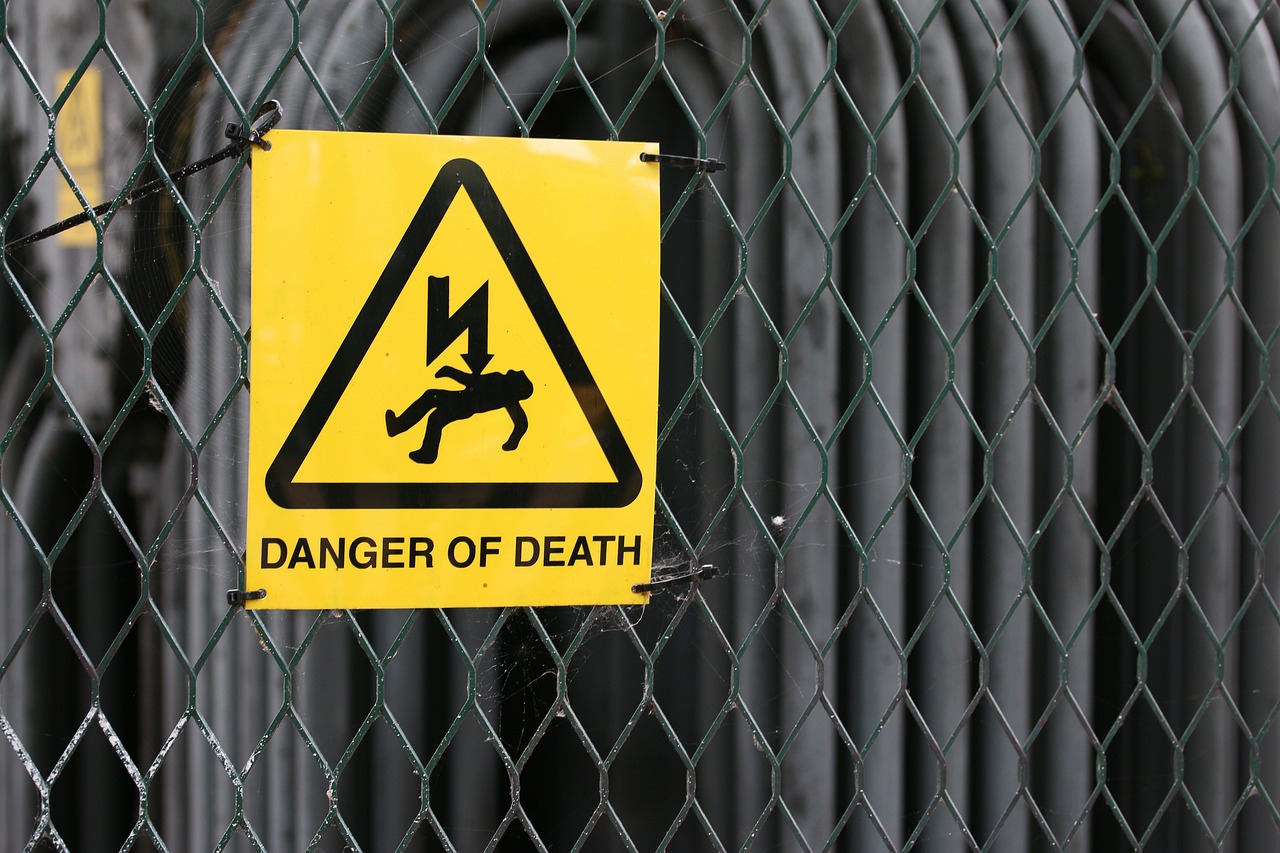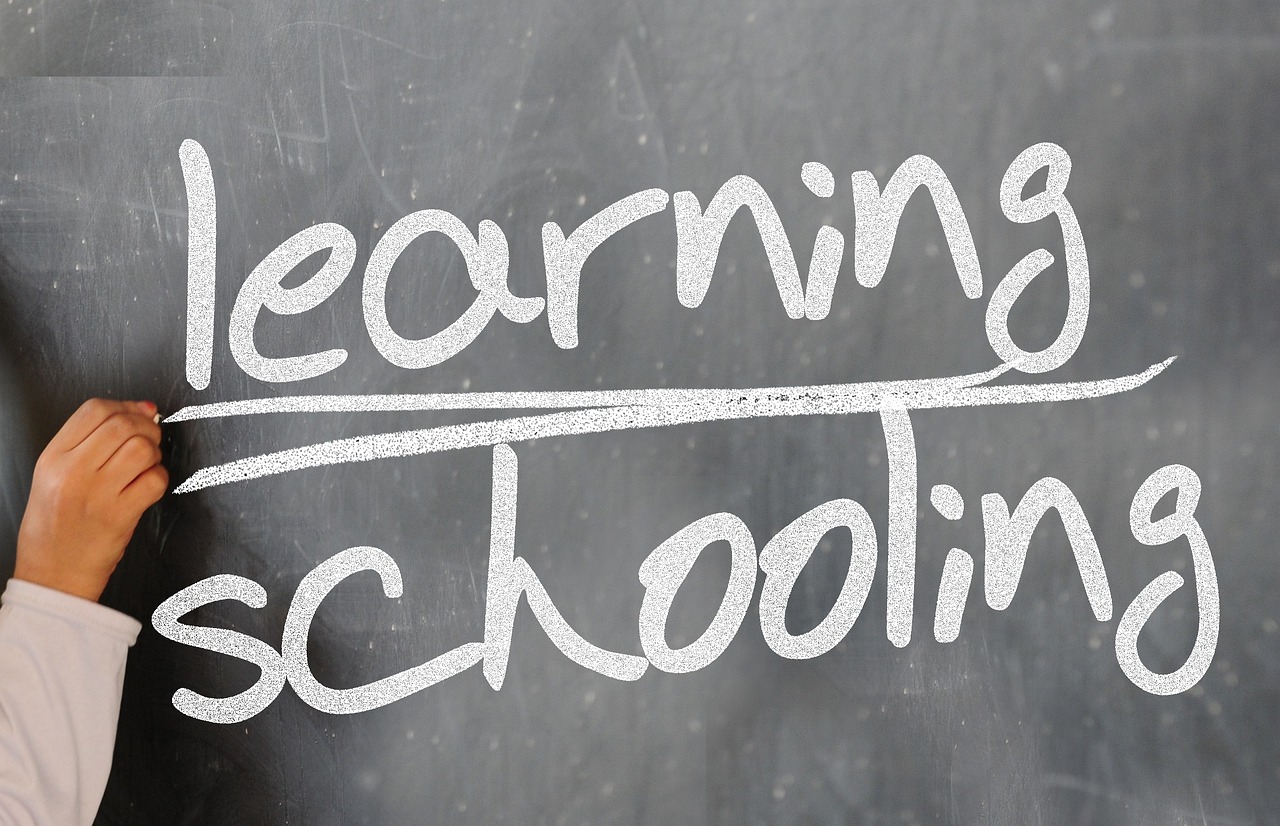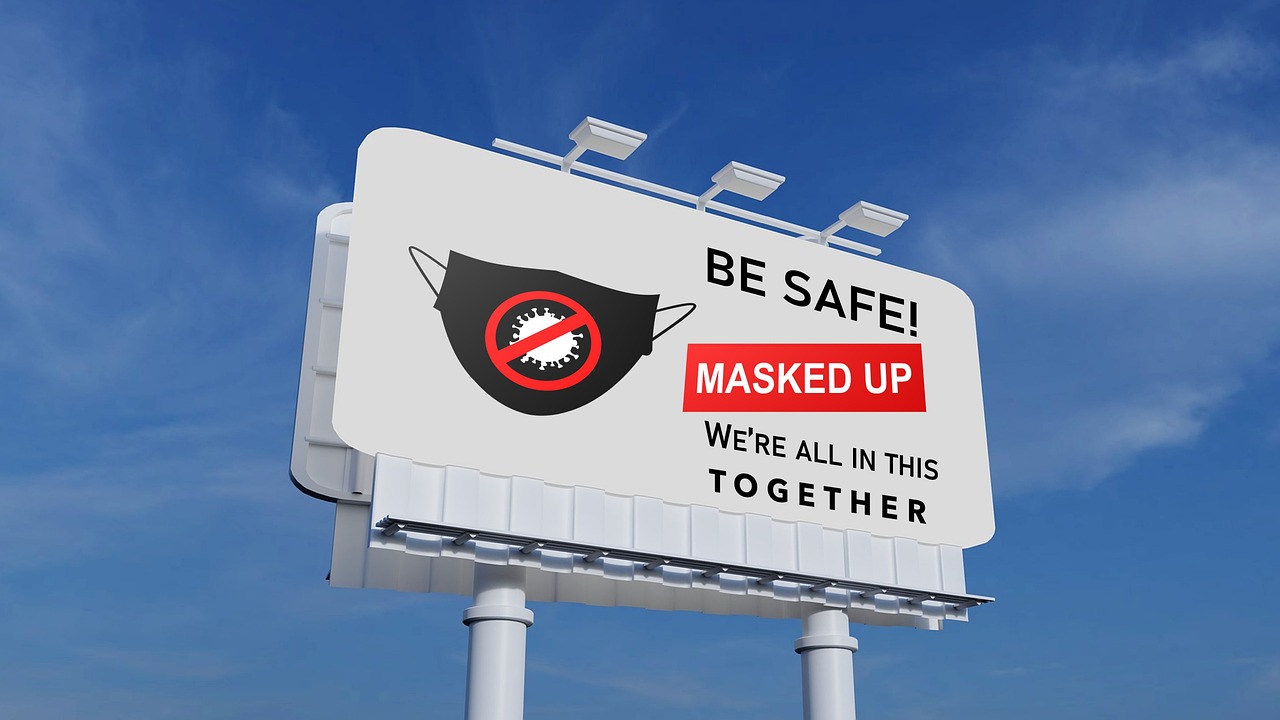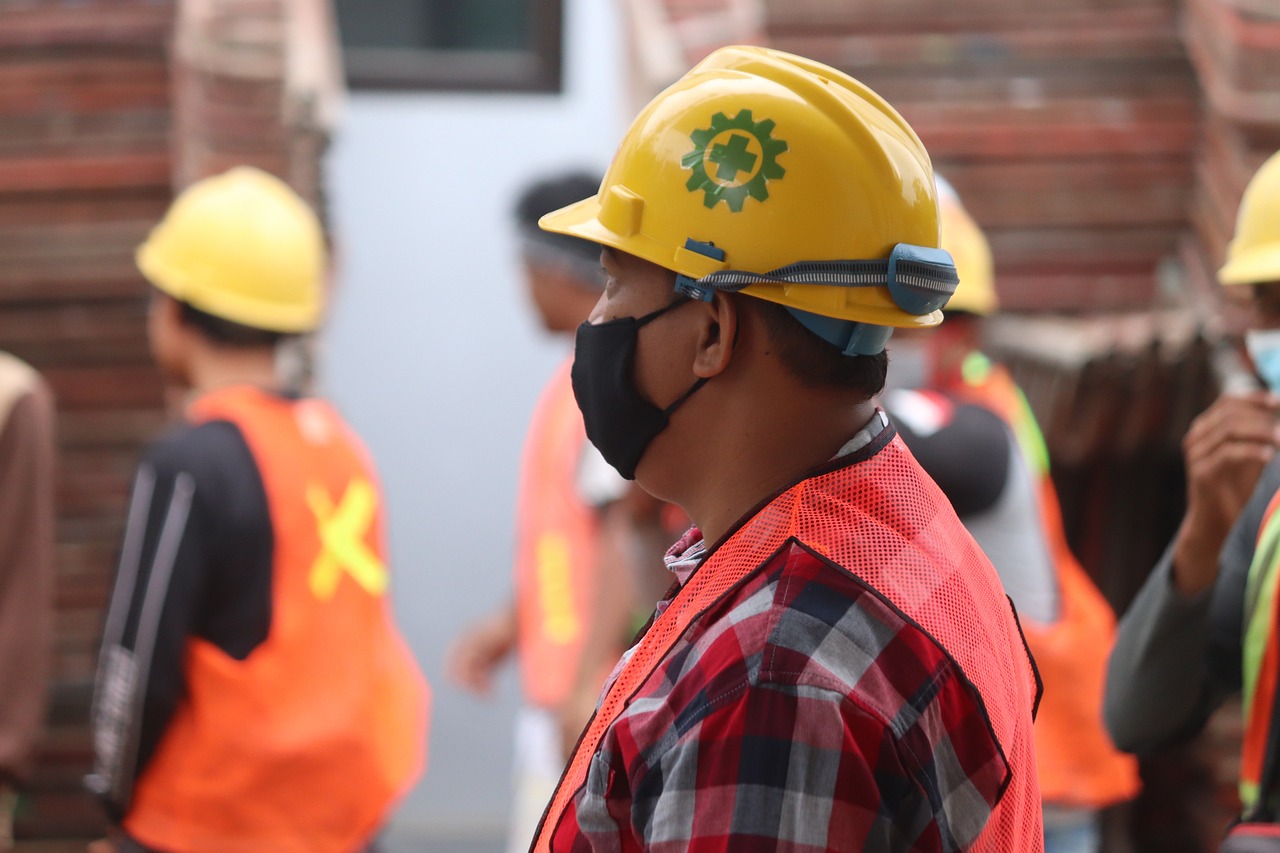Human Behavior and Its Contributing Role Towards Safety
In our fast-paced world, understanding human behavior is more crucial than ever, especially when it comes to safety. It’s fascinating to think about how our decisions and actions can either enhance or compromise safety in various environments. Whether we're at work, home, or engaging in recreational activities, our behavior plays a pivotal role in determining the level of safety around us. So, how do we navigate this intricate relationship between our actions and safety? By delving into the psychology behind our choices, we can uncover the factors that influence our decision-making processes.
Imagine walking into a construction site where safety protocols are visibly adhered to; you can almost feel the collective commitment to safety in the air. This is no coincidence. The environment—both physical and social—shapes our behavior significantly. From the way safety signs are posted to how peers interact, every element can either promote secure practices or lead to risky behaviors. Understanding this relationship can empower organizations and individuals alike to foster a safer atmosphere.
As we explore the depths of human behavior and safety, we must also consider the importance of social norms. These unwritten rules govern how we act and influence our compliance with safety regulations. For instance, if everyone in a group wears helmets while biking, an individual is more likely to follow suit. Conversely, in a setting where risky behavior is the norm, one might be tempted to abandon safety measures. This is where the concept of peer pressure comes into play, affecting our choices in ways we might not even realize.
Creating a culture of safety requires a collective effort. It's about instilling values that prioritize safety and making it a shared responsibility among all individuals. When everyone feels accountable, the likelihood of adhering to safety protocols increases dramatically. This culture can be nurtured through open communication, regular training, and by setting clear expectations.
Ultimately, the relationship between human behavior and safety is a complex web of psychological, social, and environmental factors. By understanding these elements, we can implement effective strategies to enhance safety measures and foster an environment where safe practices are the norm rather than the exception. So, what steps can we take to ensure that safety remains at the forefront of our actions? The answers lie in continuous learning, adapting to new technologies, and creating an engaging atmosphere where safety is not just a requirement but a way of life.
- What is the role of social norms in safety compliance?
Social norms significantly influence individual behaviors regarding safety, as people tend to conform to the behaviors of those around them. - How can organizations foster a culture of safety?
Organizations can promote a culture of safety by encouraging open communication, providing regular training, and ensuring that safety is a shared responsibility among all members. - What are some effective behavioral interventions for safety improvement?
Strategies such as positive reinforcement, regular safety audits, and employee engagement initiatives can help modify behaviors and promote safer practices. - How does technology impact human behavior related to safety?
Advancements in technology, such as wearable safety devices and virtual reality training, can enhance safety measures and alter individual actions in critical situations.

The Psychology of Risk Assessment
Understanding how individuals perceive and assess risks is crucial for improving safety protocols. The psychology behind risk assessment is a fascinating interplay of cognitive processes that influence our decision-making in potentially dangerous situations. When faced with risks, people often engage in a mental balancing act, weighing the potential dangers against the benefits of their actions. This process is not merely a logical calculation; it is deeply rooted in our emotions, past experiences, and social influences.
One of the key factors in risk assessment is the concept of heuristics. Heuristics are mental shortcuts that simplify decision-making. While they can be helpful, they often lead to biases that skew our perception of risk. For instance, the availability heuristic suggests that people tend to overestimate the likelihood of events that readily come to mind. If someone frequently hears about airplane accidents, they may perceive flying as more dangerous than it statistically is, leading to unnecessary anxiety.
Another important aspect is the fear factor. Fear can cloud judgment and lead to irrational decisions. When individuals are afraid, they may either overreact and avoid certain situations altogether or underestimate risks in a bid to appear brave. This emotional response can significantly impact safety behaviors, as fear can either motivate people to adhere strictly to safety protocols or push them to take reckless risks to avoid appearing fearful.
Furthermore, social influences play a vital role in how we assess risks. People often look to others for cues on how to behave in uncertain situations. This is where groupthink can come into play, where the desire for harmony or conformity in a group results in irrational decision-making. For example, if a group of friends decides to engage in risky behavior, an individual may feel pressured to join in, even if they personally perceive the activity as dangerous.
To illustrate these concepts, consider the following table that summarizes the key elements influencing risk assessment:
| Factor | Description |
|---|---|
| Heuristics | Mental shortcuts that simplify decision-making but can lead to biases. |
| Emotional Responses | Feelings such as fear can cloud judgment and lead to irrational behavior. |
| Social Influences | Peer pressure and group dynamics can significantly affect risk perception. |
Ultimately, understanding the psychology of risk assessment is essential for developing effective safety strategies. By recognizing how cognitive biases, emotions, and social dynamics shape our perceptions of risk, organizations can tailor their safety protocols to address these psychological factors. For instance, training programs that incorporate scenarios addressing emotional responses and group dynamics can better prepare individuals to make sound decisions in high-stakes situations.
In conclusion, the intricate relationship between human psychology and risk assessment underscores the need for a multifaceted approach to safety. By fostering a deeper understanding of how we assess risks, we can create more effective safety measures that resonate with individuals on both cognitive and emotional levels.
- What is risk assessment? Risk assessment is the process of identifying, evaluating, and prioritizing risks associated with a certain action or decision.
- How do emotions affect risk assessment? Emotions can significantly influence our perception of risk, often leading to irrational decisions based on fear or overconfidence.
- What role do social influences play in risk assessment? Social influences, such as peer pressure and group dynamics, can shape our behaviors and perceptions regarding safety and risk.
- How can organizations improve safety protocols? By understanding the psychological factors that influence risk assessment, organizations can develop tailored training and safety measures that resonate with individuals.

Influence of Environment on Behavior
The environment we find ourselves in plays a crucial role in shaping our behaviors, especially when it comes to safety. Think about it: have you ever noticed how your mood changes when you enter a cluttered room versus a clean, organized space? The same principle applies to safety. Our surroundings can either encourage safe behaviors or foster risky ones. For instance, in a workplace where safety protocols are visibly displayed and reinforced, employees are more likely to adhere to those practices. Conversely, in environments where safety is neglected, individuals may become desensitized to risks, leading to dangerous behaviors.
Consider the impact of physical elements such as lighting, layout, and signage. A well-lit area with clear signage promotes awareness and caution, while a dimly lit or poorly marked space can create confusion and increase the likelihood of accidents. Moreover, the arrangement of objects can either facilitate safe movement or create obstacles that lead to mishaps. For example, if a factory floor is cluttered with tools and materials, workers may be more prone to trips and falls. Therefore, designing spaces that inherently promote safety is essential.
But it's not just the physical environment that matters; the social environment is equally influential. The behavior of those around us can significantly impact our own actions. If you’re in a group that prioritizes safety, you’re more likely to adopt those values. On the flip side, if you're surrounded by peers who disregard safety measures, you might feel pressured to conform to their behavior, even if it goes against your better judgment. This phenomenon is often referred to as social proof, where individuals look to others to determine their own actions.
To illustrate this point further, let’s look at a few key factors that highlight how the environment influences behavior:
- Physical Layout: The arrangement of spaces can either encourage or discourage safe practices. For example, wide walkways and clearly marked exits can enhance safety awareness.
- Social Interactions: Positive reinforcement from peers can promote adherence to safety protocols, while negative influences can lead to risky behaviors.
- Accessibility of Safety Resources: Easy access to safety equipment and information can empower individuals to act safely.
It's fascinating to realize that our environment is like a silent partner in our decision-making process. By understanding how different elements influence behavior, we can create safer spaces that not only protect individuals but also foster a culture of safety. This requires collaboration among architects, safety professionals, and community members to ensure that safety is woven into the very fabric of our surroundings. In doing so, we can transform environments into places that not only prioritize safety but also promote a sense of responsibility among individuals.
In conclusion, the influence of the environment on behavior is profound and multifaceted. By recognizing and harnessing this influence, we can make significant strides in enhancing safety across various settings. Whether it's a workplace, a public space, or even our homes, the goal should always be to create environments that encourage safe behaviors and minimize risks.
- How does the physical environment affect safety behavior?
The physical environment, including lighting, layout, and signage, can either promote safe practices or create risks. Well-designed spaces encourage caution, while cluttered or poorly marked areas can lead to accidents. - What role do social influences play in safety compliance?
Social influences, such as peer behavior and group dynamics, significantly impact individual safety decisions. Being in a safety-conscious group can encourage adherence to safety practices. - How can we design environments to enhance safety?
By considering factors like layout, accessibility of safety resources, and fostering positive social interactions, we can create spaces that inherently promote safe behaviors.

Social Norms and Safety Compliance
When we think about safety, we often imagine rules, regulations, and protocols designed to protect us from harm. However, one of the most powerful influences on whether individuals adhere to these safety measures is the concept of social norms. Social norms are the unwritten rules that govern behavior in groups, and they can significantly impact compliance with safety regulations. Imagine walking into a workplace where everyone wears safety gear—this creates a norm that encourages others to do the same. Conversely, if the majority neglects safety protocols, it can lead to a dangerous environment where individuals feel less compelled to follow the rules.
One of the fascinating aspects of social norms is how they can shift based on context. For instance, in a setting where safety is openly discussed and prioritized, individuals are more likely to adopt safe practices. This can be seen in various environments, such as construction sites or laboratories, where peer influence plays a crucial role. When workers see their colleagues actively engaging in safety measures, it reinforces the idea that compliance is not just a personal choice but a collective responsibility.
Moreover, the influence of social norms extends beyond the workplace. In everyday life, people often look to their peers for cues on how to behave. If a group of friends decides to wear helmets while biking, others are likely to follow suit. However, if the norm leans towards recklessness, such as not wearing seatbelts or ignoring safety signs, individuals may feel pressured to conform to these unsafe behaviors. This highlights the importance of fostering a culture where safe behaviors are celebrated and encouraged.
To further illustrate the impact of social norms on safety compliance, consider the following table that outlines different scenarios and their corresponding social influences:
| Scenario | Social Influence | Safety Compliance Outcome |
|---|---|---|
| Workplace with visible safety measures | Positive peer reinforcement | High compliance with safety protocols |
| Group engaging in risky behavior | Negative peer pressure | Low compliance with safety measures |
| Community promoting safe driving | Shared values and beliefs | Increased adherence to traffic laws |
In essence, understanding the dynamics of social norms is crucial for organizations and communities aiming to enhance safety compliance. By actively promoting positive behaviors and creating an environment where safety is a shared value, we can significantly reduce the risks associated with non-compliance. It’s about building a culture that not only recognizes the importance of safety but also actively engages everyone in the process. After all, when safety becomes a norm, it transforms from a set of rules into a way of life.
- What are social norms? Social norms are the unwritten rules that dictate how individuals behave in a group setting.
- How do social norms affect safety compliance? Social norms can encourage or discourage individuals from following safety measures based on the behaviors exhibited by their peers.
- Can social norms be changed? Yes, social norms can be influenced and changed through education, awareness campaigns, and positive reinforcement of safe behaviors.
- What role do leaders play in shaping social norms? Leaders can set the tone for safety compliance by modeling safe behaviors and creating an environment that prioritizes safety.

Peer Pressure and Safety Decisions
Peer pressure is a powerful force that can significantly influence our decisions, especially when it comes to safety. Imagine being at a party where everyone is daring each other to take risks, like jumping off a high ledge into a shallow pool. The thrill of the moment can overshadow any thoughts of potential danger. This scenario illustrates how social influences can lead individuals to make choices that may compromise their safety.
In many situations, the desire to fit in or gain approval from peers can push individuals to engage in risky behaviors. For instance, young drivers might feel compelled to speed or perform stunts if their friends are encouraging them. This kind of peer pressure can create a dangerous environment where safety is disregarded for the sake of acceptance. It's essential to recognize that while peer pressure can lead to negative outcomes, it can also work in a positive direction. When friends support each other in making safe choices, it can create a culture of safety that benefits everyone involved.
To better understand the dual nature of peer pressure, consider the following examples:
- Negative Influence: A group of friends decides to skip wearing helmets while biking, leading to increased risk of head injuries.
- Positive Influence: A peer group encourages each other to wear safety gear while skateboarding, reducing the likelihood of accidents.
It's clear that the impact of peer pressure on safety decisions can be profound. To combat negative influences, fostering an environment where safety is prioritized is crucial. This involves not only educating individuals about the risks associated with certain behaviors but also promoting open discussions about safety within peer groups. Encouraging individuals to express their concerns and stand up for safe practices can empower them to resist negative peer pressure.
Moreover, organizations and communities can play a vital role in shaping these dynamics. By creating campaigns that highlight positive safety behaviors and showcasing stories of individuals who made safe choices despite peer pressure, we can inspire others to follow suit. Ultimately, understanding the complexities of peer pressure and its effects on safety decisions is essential for creating a culture that values safety over conformity.
Q1: How can I resist negative peer pressure related to safety?
A1: It's important to stay true to your values and prioritize your safety. Surround yourself with friends who support safe choices and practice assertiveness in expressing your concerns.
Q2: Can positive peer pressure actually enhance safety?
A2: Absolutely! Positive peer pressure can encourage individuals to adopt safer behaviors by creating a supportive environment where safety is valued and promoted.
Q3: What role do parents play in shaping their children's response to peer pressure?
A3: Parents can educate their children about the importance of safety and help them develop the confidence to make safe choices, even when faced with peer pressure.

Creating a Culture of Safety
Creating a culture of safety is not just a checkbox on a corporate agenda; it’s a mindset that permeates every level of an organization. Imagine walking into a workplace where safety is as integral as the air we breathe—where every employee, from the janitor to the CEO, shares a common belief that safety is a shared responsibility. This kind of culture doesn't happen overnight; it requires deliberate actions, consistent messaging, and a commitment to fostering an environment where everyone feels empowered to prioritize safety.
One of the first steps in creating this culture is to establish clear communication channels. When employees feel they can voice their concerns without fear of repercussions, they are more likely to report unsafe conditions or behaviors. This openness encourages a proactive approach to safety, rather than a reactive one. For instance, holding regular safety meetings where employees can discuss potential hazards and suggest improvements can significantly enhance this culture. Engagement is key; when people feel involved, they are more likely to take ownership of safety practices.
Moreover, leadership plays a pivotal role in shaping this culture. Leaders need to model safe behaviors and demonstrate their commitment to safety through their actions. When leaders actively participate in safety training and adhere to safety protocols, it sends a strong message to the rest of the team. It’s like the old saying goes: “Actions speak louder than words.” If leaders prioritize safety, employees are likely to follow suit.
Another essential element in cultivating a culture of safety is recognizing and rewarding safe behaviors. Positive reinforcement can be a powerful motivator. Consider implementing a recognition program that highlights employees who consistently follow safety protocols or contribute to safety improvements. This not only boosts morale but also encourages others to adopt similar behaviors. For example, a simple monthly acknowledgment of a "Safety Champion" can go a long way in promoting a positive safety culture.
To further support this culture, organizations should invest in comprehensive training programs. Training should not be a one-time event but rather a continuous process that evolves with new safety standards and technologies. When employees are well-informed and trained, they are more likely to make safer choices. Incorporating hands-on training, simulations, and real-life scenarios can enhance the learning experience, making it relevant and engaging.
Finally, it’s crucial to regularly assess and refine safety policies and practices. This could involve conducting safety audits, gathering employee feedback, and staying updated with industry best practices. By continuously improving and adapting, organizations can create a dynamic safety culture that not only meets compliance standards but also genuinely protects employees. In essence, a culture of safety is built on the foundation of trust, communication, and shared values. It’s about creating an environment where everyone feels responsible for safety, leading to a healthier and more productive workplace.
- What is a culture of safety?
A culture of safety refers to an organizational commitment to safety that goes beyond compliance, where safety is prioritized and integrated into every aspect of the workplace.
- How can leadership influence safety culture?
Leadership can influence safety culture by modeling safe behaviors, encouraging open communication, and actively participating in safety initiatives.
- Why is employee engagement important in safety?
Employee engagement is crucial because it fosters a sense of ownership and responsibility towards safety, leading to proactive safety measures and reporting of hazards.
- What role does training play in safety culture?
Training is vital as it equips employees with the necessary knowledge and skills to recognize and mitigate risks, ensuring they can make informed decisions about safety.

Behavioral Interventions for Safety Improvement
When it comes to enhancing safety in any environment, understanding human behavior is key. Behavioral interventions serve as a bridge between recognizing potential risks and implementing effective safety measures. These interventions are designed to modify behaviors in a way that promotes safer practices among individuals, whether in the workplace, at home, or in public spaces. Imagine a world where every action taken is a conscious decision towards safety—this is the goal of behavioral interventions.
One effective approach is the use of positive reinforcement. This technique encourages individuals to engage in safe behaviors by rewarding them for compliance. For instance, in a workplace setting, employees might receive recognition or tangible rewards for adhering to safety protocols. This not only boosts morale but also fosters a culture where safety is prioritized. A study conducted in various industries showed that organizations implementing positive reinforcement saw a significant decrease in workplace accidents—proof that a little encouragement goes a long way.
Another strategy involves nudge theory, which subtly alters the environment to encourage safer behaviors without restricting choices. For example, placing hand sanitizers in visible locations or using signage that reminds employees to wear protective gear can significantly impact compliance rates. These nudges work by making safe choices the easiest ones to make, almost like setting up a domino effect where one safe behavior leads to another.
Moreover, peer influence can be harnessed as a powerful tool for behavioral change. When individuals see their colleagues actively participating in safety measures, they are more likely to follow suit. This is where group dynamics come into play. Creating team-based safety challenges or initiatives can foster camaraderie while emphasizing the importance of safety. For example, a friendly competition to see which team can go the longest without a safety incident can motivate everyone to stay vigilant.
In addition to these strategies, it is essential to provide ongoing training and feedback. Individuals should not only be trained on safety protocols but also receive regular updates and constructive feedback on their performance. This continuous loop of learning ensures that safety remains a priority and that individuals feel supported in their efforts. Organizations can implement regular safety audits or feedback sessions to reinforce this commitment.
To sum up, behavioral interventions are not just about enforcing rules; they are about creating an environment where safety becomes second nature. By employing strategies such as positive reinforcement, nudging, leveraging peer influence, and providing continuous training, we can significantly improve safety outcomes. The real challenge lies in making safety a shared value and ensuring that every individual feels empowered to contribute to a safer environment.
- What are behavioral interventions?
Behavioral interventions are strategies designed to change individuals' behaviors in a way that promotes safer practices. - How can positive reinforcement improve safety?
By rewarding individuals for following safety protocols, organizations can encourage a culture of safety and reduce incidents. - What is nudge theory?
Nudge theory involves subtly changing the environment to encourage safer behaviors without limiting choices. - Why is peer influence important in safety?
People are more likely to adopt safe behaviors when they see their peers doing the same, making group dynamics crucial for safety compliance.

The Role of Training and Education
When it comes to safety, training and education are not just buzzwords; they are the backbone of any effective safety strategy. Think of it this way: if safety is a house, then training is the foundation that keeps everything standing strong. Without it, even the most elaborate safety protocols can crumble under pressure. So, why is training so essential? It equips individuals with the knowledge, skills, and attitudes necessary to recognize hazards and respond appropriately in various situations.
Effective training goes beyond mere compliance; it fosters a culture of safety where everyone feels responsible for their own well-being and that of others. For instance, when employees understand the risks associated with their tasks and the correct procedures to follow, they are less likely to engage in unsafe behaviors. This is particularly crucial in high-risk environments like construction sites or healthcare facilities, where the stakes are significantly higher. In fact, studies have shown that organizations that prioritize safety training experience fewer accidents and injuries, resulting in both human and financial benefits.
Moreover, the methods used in training can make a world of difference. Traditional classroom settings can be effective, but they often lack engagement. On the other hand, interactive training methods, such as hands-on simulations and real-life scenarios, can significantly enhance learning retention. This is where technology comes into play, offering innovative solutions that make training more engaging. For example, virtual reality (VR) training allows individuals to immerse themselves in realistic safety scenarios, preparing them for actual challenges they may face on the job.
To illustrate the impact of training on safety, let’s consider the following table that outlines the benefits of various training methods:
| Training Method | Benefits |
|---|---|
| Classroom Training | Structured learning environment, good for theoretical knowledge |
| Hands-On Training | Practical application, better retention of skills |
| Simulation Training | Realistic scenarios, prepares for unexpected situations |
| Virtual Reality Training | Immersive experience, enhances engagement and learning |
In addition to the methods used, the content of the training is equally important. It should be relevant and tailored to the specific needs of the audience. For example, safety training for a manufacturing plant will differ significantly from that of an office environment. By customizing training programs, organizations can ensure that employees are adequately prepared for the unique challenges they face in their respective roles.
Moreover, training should not be a one-time event but rather an ongoing process. Safety protocols and regulations evolve, and so should the training programs. Continuous learning helps to keep safety at the forefront of everyone’s mind and reinforces the importance of adhering to safety standards. Regular refresher courses and updates on new safety practices can make a significant difference in maintaining a safe working environment.
In conclusion, the role of training and education in promoting safety cannot be overstated. By investing in comprehensive training programs that engage employees and address their specific needs, organizations can create a safer workplace where everyone is empowered to act responsibly. After all, when it comes to safety, knowledge truly is power!
- Why is training important for safety? Training equips individuals with the necessary knowledge and skills to recognize and respond to hazards effectively.
- What types of training methods are most effective? Hands-on, simulation, and virtual reality training methods are often more engaging and effective in enhancing learning retention.
- How often should safety training be conducted? Safety training should be an ongoing process with regular refresher courses to keep up with evolving safety protocols.
- Can customized training improve safety outcomes? Yes, tailoring training to the specific needs of the audience can make it more relevant and effective in promoting safe behaviors.

Effective Communication in Safety Training
Effective communication is the backbone of successful safety training. It’s not just about presenting information; it’s about ensuring that every participant understands the material and feels empowered to act on it. Imagine trying to navigate a complex maze without clear directions—frustrating, right? That’s how individuals feel when safety information is poorly communicated. To bridge this gap, trainers must adopt strategies that enhance clarity, engagement, and retention.
One of the key components of effective communication is the use of clear and concise language. Avoiding jargon and overly technical terms can help participants grasp crucial safety concepts without feeling overwhelmed. Think of it like explaining a recipe; if you use complicated culinary terms, your audience might lose interest or misunderstand the steps. Instead, break down the information into simple, digestible parts. For instance, instead of saying “utilize personal protective equipment,” you might say “always wear your safety gear.”
Visual aids can also play a significant role in enhancing communication during safety training. Utilizing charts, diagrams, and videos can help illustrate key points and provide a visual context that words alone cannot convey. For example, showing a video demonstrating proper lifting techniques can be far more effective than merely explaining them. This multi-sensory approach caters to different learning styles, ensuring that everyone can engage with the material in a way that resonates with them.
Moreover, encouraging interaction and participation during training sessions can significantly improve understanding and retention. When participants are actively involved—be it through discussions, role-playing scenarios, or hands-on demonstrations—they are more likely to remember the information presented. As a trainer, asking open-ended questions can stimulate conversation and allow individuals to share their thoughts and experiences. This not only fosters a collaborative learning environment but also helps in identifying any misconceptions that may need addressing.
Another effective strategy is to provide real-life examples that participants can relate to. Sharing stories of incidents—whether they resulted in injuries or were near misses—can create a sense of urgency and relevance. When individuals see the real-world implications of safety practices, they are more likely to take the training seriously. It’s like telling a cautionary tale; the more relatable and impactful the story, the more it resonates with the audience.
Finally, feedback is a crucial element in effective communication. After training sessions, gathering feedback from participants about what they found helpful or confusing can inform future training efforts. This not only shows that you value their input but also helps in continually improving the training program. Consider using anonymous surveys or suggestion boxes to encourage honest feedback, as this can lead to valuable insights that enhance the overall training experience.
In summary, effective communication in safety training is about clarity, engagement, and relatability. By focusing on these elements, trainers can ensure that safety information is not only understood but also retained and acted upon, ultimately leading to a safer environment for everyone involved.
- What are the key components of effective communication in safety training?
The key components include clear language, visual aids, participant interaction, real-life examples, and feedback mechanisms. - Why is participant interaction important in safety training?
Interaction enhances engagement and helps participants retain information better, making them more likely to apply what they've learned. - How can I improve my safety training sessions?
Incorporate clear communication, use visual aids, encourage participation, share relatable examples, and seek feedback from participants.

Continuous Learning and Safety Adaptation
In today's fast-paced world, continuous learning is not just a luxury; it's a necessity, especially when it comes to safety. The landscape of safety protocols and regulations is constantly evolving, influenced by new research, technological advancements, and changing societal norms. This dynamic environment necessitates that individuals and organizations alike remain vigilant and adaptable. But what does it mean to engage in continuous learning for safety? It's about fostering a mindset where learning is ongoing, where every incident, near miss, or change in procedure is viewed as an opportunity for growth.
One of the most effective ways to promote continuous learning in safety is through regular training sessions. These sessions should not be seen as one-off events but as part of a larger, ongoing strategy. For instance, companies can implement quarterly safety workshops that not only review existing protocols but also introduce new safety measures based on the latest industry trends. This approach ensures that employees are not only aware of safety practices but are also equipped to adapt to new challenges as they arise.
Moreover, the integration of feedback mechanisms can significantly enhance the learning process. When employees feel encouraged to share their insights and experiences, organizations can identify gaps in knowledge and understanding. This two-way communication fosters a culture of safety where everyone feels responsible for maintaining a safe environment. By encouraging open dialogue, organizations can adapt their training programs to address specific concerns or misconceptions, ensuring that learning is relevant and impactful.
Another powerful tool for continuous learning is the use of technology. With the advent of e-learning platforms and mobile applications, safety training can now be more accessible and engaging. Employees can participate in interactive courses that allow them to learn at their own pace. For example, a mobile app could provide safety quizzes, video tutorials, and real-time updates on safety protocols, making it easier for individuals to stay informed and adapt to changes. This flexibility not only enhances knowledge retention but also empowers employees to take ownership of their safety education.
To illustrate the importance of continuous learning in safety, consider the following table that outlines the key benefits:
| Benefit | Description |
|---|---|
| Enhanced Knowledge | Regular updates ensure everyone is aware of the latest safety practices. |
| Increased Engagement | Interactive training fosters a more involved workforce. |
| Improved Compliance | Ongoing education leads to higher adherence to safety regulations. |
| Proactive Risk Management | Continuous learning helps identify and mitigate potential hazards before they escalate. |
Ultimately, the goal of continuous learning and safety adaptation is to cultivate a workforce that not only understands the importance of safety but is also prepared to respond effectively in any situation. By prioritizing education, feedback, and technology, organizations can create an environment where safety is not just a set of rules but a deeply ingrained culture. So, ask yourself: are you ready to embrace continuous learning in your safety practices? The future of safety depends on it!
- What is continuous learning in safety? Continuous learning in safety refers to the ongoing process of educating individuals about safety practices and adapting to new challenges as they arise.
- How can technology aid in continuous learning for safety? Technology can provide accessible training resources, interactive courses, and real-time updates, making it easier for individuals to stay informed about safety protocols.
- Why is feedback important in safety training? Feedback encourages open communication, helping organizations identify knowledge gaps and improve their training programs accordingly.
- What are the benefits of continuous learning in safety? Benefits include enhanced knowledge, increased engagement, improved compliance, and proactive risk management.

Technology's Impact on Human Behavior and Safety
In today's fast-paced world, technology has become an integral part of our daily lives, influencing not just how we communicate but also how we perceive and respond to safety. From smartphones to smart home devices, the advancements in technology have transformed our understanding of safety measures, making them more accessible and efficient. But how exactly does technology shape our behaviors when it comes to safety? Let’s delve into the various facets of this relationship.
One of the most significant impacts of technology on safety is through the use of wearable safety devices. These gadgets, like smartwatches and fitness trackers, are not just trendy accessories; they serve a critical role in monitoring health and safety metrics in real-time. Imagine a construction worker wearing a helmet equipped with sensors that can detect fatigue or hazardous conditions. This technology can alert the individual and their supervisors, potentially preventing accidents before they occur. The integration of such devices into daily routines not only enhances personal safety but also fosters a proactive approach to risk management.
Moreover, the emergence of simulation and virtual reality (VR) training has revolutionized how individuals prepare for safety challenges. Traditional training methods often fall short in providing realistic scenarios that prepare individuals for real-world situations. However, with VR, trainees can immerse themselves in lifelike environments where they can practice responding to emergencies without the associated risks. This hands-on experience not only boosts confidence but also improves retention of safety protocols. The ability to simulate various scenarios allows individuals to develop critical thinking and quick decision-making skills essential for maintaining safety.
Furthermore, technology facilitates effective communication in safety training. With the use of mobile apps and online platforms, organizations can disseminate safety information quickly and efficiently. This means that employees can receive updates on safety protocols, training materials, and emergency procedures at their fingertips. The immediacy of information helps reinforce safety measures and ensures that everyone is on the same page, reducing the likelihood of miscommunication during critical moments.
However, while technology offers numerous benefits, it is essential to recognize that it also presents challenges. For instance, the reliance on technology can lead to complacency. Individuals may become overly dependent on devices and neglect their intuitive judgment, which can be detrimental in emergency situations. Therefore, it is crucial to strike a balance between leveraging technology and maintaining fundamental safety awareness.
In conclusion, technology undeniably plays a transformative role in shaping human behavior related to safety. As we continue to innovate and integrate new technologies into our lives, understanding their impact on safety practices is vital. By embracing both the advantages and challenges that come with technological advancements, we can foster a safer environment for everyone.
- How do wearable safety devices improve safety?
Wearable safety devices monitor health metrics and can alert users to hazardous conditions, thereby preventing accidents.
- What is the role of virtual reality in safety training?
Virtual reality provides immersive training experiences that prepare individuals for real-life safety challenges in a risk-free environment.
- Can technology lead to complacency in safety practices?
Yes, over-reliance on technology can cause individuals to neglect their instincts and judgment, which are crucial in emergencies.

Wearable Safety Devices
In today's fast-paced world, the integration of technology into our daily lives has brought about a revolution in how we approach safety. are at the forefront of this transformation, providing individuals with real-time data and alerts that can significantly enhance their safety in various environments. Imagine a worker on a construction site, equipped with a smart helmet that not only protects from physical impacts but also monitors vital signs and environmental conditions. This is not science fiction; it's a reality that many are embracing.
These devices come in various forms, including smartwatches, fitness trackers, and specialized safety gear. They are designed to monitor health metrics such as heart rate, body temperature, and even exposure to harmful substances. For instance, a construction worker wearing a smart vest can receive immediate alerts if they are exposed to dangerous levels of gases, allowing them to take action before it's too late. The ability to track and respond to risks in real-time is a game-changer, making workplaces safer and more efficient.
Furthermore, the data collected by these devices can be invaluable for organizations looking to improve safety protocols. By analyzing trends in health and safety metrics, companies can identify potential hazards and implement preventative measures. For example, if data shows that workers are frequently experiencing elevated heart rates during specific tasks, management can investigate and adjust workloads or provide additional training to mitigate stress factors.
However, with the benefits of wearable safety devices come challenges. Privacy concerns are paramount, as individuals may worry about how their data is used and who has access to it. Organizations must establish clear policies on data usage and ensure that employees are informed and consenting to the collection of their personal information. Additionally, the effectiveness of these devices relies heavily on user engagement; if workers do not wear or utilize the technology properly, its potential benefits diminish.
To illustrate the impact of wearable safety devices, consider the following table that outlines some popular devices and their key features:
| Device | Key Features | Use Case |
|---|---|---|
| Smart Helmet | Impact protection, vital signs monitoring, environmental alerts | Construction sites, industrial work |
| Fitness Tracker | Heart rate monitoring, activity tracking, GPS | Personal fitness, outdoor activities |
| Smart Vest | Gas detection, temperature monitoring, communication tools | Hazardous work environments |
In conclusion, wearable safety devices are not just gadgets; they are essential tools that can lead to safer environments by promoting proactive safety measures. As technology continues to evolve, we can expect even more advanced features that will further enhance the effectiveness of these devices. The key to maximizing their potential lies in fostering a culture of safety where both employers and employees are committed to leveraging these technologies for their well-being.
- What are wearable safety devices? Wearable safety devices are technology-enabled gadgets designed to monitor health and safety metrics in real-time, providing alerts and data to enhance safety in various environments.
- How do wearable safety devices improve workplace safety? They offer real-time monitoring of vital signs and environmental conditions, allowing for immediate responses to potential hazards.
- Are there privacy concerns with wearable safety devices? Yes, concerns about data privacy and who has access to personal information are significant, and organizations must establish clear policies to address these issues.
- Can wearable safety devices be used in all industries? While they are particularly beneficial in high-risk industries like construction and manufacturing, they can also be useful in healthcare, sports, and personal fitness.

Simulation and Virtual Reality Training
This article explores the intricate relationship between human behavior and safety, highlighting factors that influence decision-making and actions, and how understanding these can enhance safety measures in various environments.
Understanding how individuals perceive and assess risks is crucial for improving safety protocols. This section delves into the cognitive processes behind risk evaluation and decision-making in potentially dangerous situations.
The surrounding environment significantly impacts human behavior. This subheading discusses how physical and social environments shape safety-related actions and the importance of designing spaces that promote safe behaviors.
Social norms play a vital role in shaping individual behaviors regarding safety. This section examines how group dynamics and peer influences affect compliance with safety regulations and practices.
Peer pressure can lead to both positive and negative safety behaviors. This part explores how social influences can encourage safe practices or, conversely, lead individuals to take unnecessary risks.
Establishing a culture that prioritizes safety is essential. This section discusses strategies for fostering an environment where safety is a shared value and responsibility among all individuals.
Implementing behavioral interventions can significantly enhance safety outcomes. This subheading covers various strategies that organizations can use to modify behaviors and promote safer practices among employees and the public.
Training and education are critical components of promoting safety. This section highlights effective training methods that can improve knowledge, skills, and attitudes towards safety in various settings.
Clear communication is essential in safety training. This part discusses techniques for conveying safety information effectively to ensure understanding and retention among participants.
Safety is an evolving field, requiring continuous learning. This section emphasizes the importance of adapting safety training to incorporate new knowledge and practices for ongoing improvement.
Technology plays a transformative role in influencing human behavior related to safety. This subheading explores how advancements in technology can enhance safety measures and alter individual actions in critical situations.
Wearable technology can provide real-time data and alerts to enhance safety. This section discusses the benefits of using devices that monitor health and safety metrics in various environments.
Simulation and virtual reality (VR) training are revolutionizing how we approach safety education. Imagine stepping into a virtual world where you can practice emergency responses without the real-world consequences. This immersive technology provides a safe space for individuals to experience high-stress scenarios, such as fire evacuations or hazardous material spills, allowing them to learn and adapt their responses. The realism of VR training can significantly enhance retention of safety protocols compared to traditional methods.
One of the most significant advantages of simulation training is the ability to repeat scenarios as often as necessary. Participants can make mistakes, learn from them, and try again without any risk. This cycle of practice and feedback is crucial for building confidence and competence in handling emergencies. For example, a firefighter can practice navigating through a burning building in a virtual environment, honing their skills and decision-making abilities in a controlled setting.
Moreover, VR training can be tailored to specific industries, ensuring that the scenarios are relevant to the participants' actual work environments. This customization leads to more effective training outcomes. For instance, healthcare professionals can simulate patient care in emergency situations, while construction workers can navigate potential hazards on job sites.
To illustrate the effectiveness of simulation and VR training, consider the following table that compares traditional training methods with VR training:
| Aspect | Traditional Training | Simulation/VR Training |
|---|---|---|
| Realism | Limited | High |
| Risk of Injury | Possible | None |
| Repetition | Limited | Unlimited |
| Engagement | Moderate | High |
| Cost | Variable | Initial investment, but lower long-term costs |
In conclusion, the integration of simulation and virtual reality training into safety protocols not only enhances learning but also fosters a culture of preparedness. As we embrace these technologies, we pave the way for safer environments and more confident individuals ready to tackle real-life challenges.
Understanding the factors that drive behavior change is essential for improving safety practices. This section discusses key elements that influence individuals' willingness to adopt safer behaviors and practices.
Motivation plays a crucial role in encouraging safe behaviors. This part explores various motivational strategies and incentives that can effectively promote compliance with safety standards.
Identifying and addressing barriers to safe behavior is vital. This section discusses common obstacles individuals face and strategies to overcome these challenges to enhance safety adherence.
- What is the primary benefit of simulation and VR training?
Simulation and VR training provide a safe environment for individuals to practice emergency responses, enhancing their skills and confidence without real-world risks. - How does VR training compare to traditional training methods?
VR training offers higher realism, unlimited repetition, and greater engagement, making it a more effective learning tool for safety protocols. - Can VR training be customized for different industries?
Yes, VR training can be tailored to specific industry needs, ensuring that scenarios are relevant and applicable to participants' work environments.

Factors Influencing Safety Behavior Change
Understanding the factors that drive behavior change is essential for improving safety practices. It’s like trying to solve a puzzle; each piece represents a different influence that can either encourage or hinder safe actions. When we look at safety behavior, we must consider a variety of elements, including personal motivation, social influences, environmental cues, and organizational culture. Each of these factors plays a significant role in shaping how individuals respond to safety protocols and regulations.
One of the most powerful motivators for adopting safe behaviors is the presence of incentives. These can come in many forms, such as recognition, rewards, or even the simple satisfaction of knowing one has contributed to a safer environment. For example, a company might implement a safety incentive program that rewards employees for reporting hazards or adhering to safety protocols. This not only encourages compliance but also fosters a sense of community and shared responsibility among employees.
However, it’s not just about incentives; we also need to consider the barriers that individuals face when trying to adopt safer behaviors. These barriers can be physical, such as a lack of proper safety equipment, or psychological, such as fear of ridicule from peers for being overly cautious. Identifying these obstacles is crucial. For instance, if employees feel that their concerns about safety are not taken seriously, they may be less likely to engage in safe practices. Addressing these barriers requires open communication and a culture that values safety above all.
The environment in which individuals operate significantly influences their behavior. A well-designed workspace can promote safety by making safe choices the easiest choices. For example, placing safety equipment in easily accessible locations or using clear signage can help remind individuals of the importance of safety protocols. On the flip side, a cluttered or chaotic environment can lead to distractions and increase the likelihood of accidents.
Furthermore, let’s not underestimate the impact of social dynamics. Humans are inherently social creatures, and the behaviors of those around us can greatly influence our own. If someone is working in an environment where safety is prioritized and modeled by peers, they are more likely to adopt those behaviors themselves. Conversely, if they observe risky behaviors being normalized, they may feel pressured to conform. This is where the concept of peer pressure comes into play, which can have both positive and negative effects on safety compliance.
In summary, the factors influencing safety behavior change are multifaceted and interconnected. By understanding these influences, organizations can develop targeted strategies to promote safer behaviors among their employees. Whether it’s through incentives, addressing barriers, creating a supportive environment, or leveraging social dynamics, the goal is to create a culture where safety is not just a policy but a shared value.
Q: What are some common barriers to safe behavior?
A: Common barriers include lack of proper equipment, insufficient training, and psychological factors such as fear of ridicule or complacency.
Q: How can organizations effectively motivate employees to adopt safer behaviors?
A: Organizations can implement incentive programs, recognize safe behavior publicly, and foster a culture that values safety to motivate employees.
Q: Why is the environment important for safety behavior?
A: A well-designed environment can facilitate safe practices by making safety equipment accessible and using clear signage, while a chaotic environment can lead to distractions and accidents.
Q: How does peer pressure affect safety compliance?
A: Peer pressure can encourage safe behaviors when individuals observe their colleagues prioritizing safety, but it can also lead to risky behaviors if unsafe practices are normalized within a group.

Motivation and Incentives for Safety
This article explores the intricate relationship between human behavior and safety, highlighting factors that influence decision-making and actions, and how understanding these can enhance safety measures in various environments.
Understanding how individuals perceive and assess risks is crucial for improving safety protocols. This section delves into the cognitive processes behind risk evaluation and decision-making in potentially dangerous situations.
The surrounding environment significantly impacts human behavior. This subheading discusses how physical and social environments shape safety-related actions and the importance of designing spaces that promote safe behaviors.
Social norms play a vital role in shaping individual behaviors regarding safety. This section examines how group dynamics and peer influences affect compliance with safety regulations and practices.
Peer pressure can lead to both positive and negative safety behaviors. This part explores how social influences can encourage safe practices or, conversely, lead individuals to take unnecessary risks.
Establishing a culture that prioritizes safety is essential. This section discusses strategies for fostering an environment where safety is a shared value and responsibility among all individuals.
Implementing behavioral interventions can significantly enhance safety outcomes. This subheading covers various strategies that organizations can use to modify behaviors and promote safer practices among employees and the public.
Training and education are critical components of promoting safety. This section highlights effective training methods that can improve knowledge, skills, and attitudes towards safety in various settings.
Clear communication is essential in safety training. This part discusses techniques for conveying safety information effectively to ensure understanding and retention among participants.
Safety is an evolving field, requiring continuous learning. This section emphasizes the importance of adapting safety training to incorporate new knowledge and practices for ongoing improvement.
Technology plays a transformative role in influencing human behavior related to safety. This subheading explores how advancements in technology can enhance safety measures and alter individual actions in critical situations.
Wearable technology can provide real-time data and alerts to enhance safety. This section discusses the benefits of using devices that monitor health and safety metrics in various environments.
Simulation and virtual reality offer innovative training solutions. This part examines how immersive technologies can prepare individuals for real-life safety challenges through realistic scenarios and experiences.
Understanding the factors that drive behavior change is essential for improving safety practices. This section discusses key elements that influence individuals' willingness to adopt safer behaviors and practices.
Motivation is a powerful driver of human behavior, especially when it comes to safety. In many environments, the desire to comply with safety protocols often stems from a combination of intrinsic motivation—such as personal values and beliefs—and extrinsic incentives, like rewards or recognition. When individuals feel personally invested in their safety and the safety of others, they are more likely to engage in safe practices. For instance, imagine a workplace where employees are not only told to wear safety gear but are also rewarded for consistently doing so. This can create a ripple effect, encouraging others to follow suit.
Incentives can take various forms, ranging from financial bonuses to public acknowledgment of safe practices. For example, implementing a points system where employees earn points for adhering to safety protocols can lead to increased participation. These points could then be exchanged for prizes, creating a fun and competitive atmosphere that emphasizes safety. It's not just about avoiding accidents; it's about fostering a culture where safety is celebrated.
Moreover, motivation can be significantly enhanced by involving employees in the safety process. When individuals have a say in safety measures or are part of the decision-making process, they tend to feel a greater sense of ownership and responsibility. This participatory approach can lead to innovative safety solutions that are more effective because they are tailored to the specific needs and circumstances of the workplace. In essence, when people feel that their input is valued, they are more motivated to adhere to safety practices.
However, it's important to recognize that motivation is not a one-size-fits-all solution. Different individuals respond to different types of incentives. Some may be driven by personal achievement, while others may be more influenced by peer recognition. Understanding these nuances is crucial for designing effective safety programs. Organizations should consider conducting surveys or focus groups to identify what motivates their employees most effectively.
- What are the key factors that influence safety behavior?
Key factors include motivation, environmental influences, social norms, and personal values. - How can organizations improve safety compliance?
Organizations can improve compliance by creating a culture of safety, providing incentives, and involving employees in safety discussions. - What role does technology play in enhancing safety?
Technology, such as wearable devices and virtual reality training, can provide real-time data and immersive training experiences that improve safety awareness and preparedness.

Overcoming Barriers to Safe Behavior
When it comes to promoting safety, understanding the barriers that individuals face is crucial. These barriers can stem from various sources, such as personal beliefs, environmental factors, and social influences. For instance, someone might feel that safety protocols are unnecessary or overly cautious, leading them to ignore important guidelines. Additionally, the environment plays a significant role; if safety measures are inconvenient or not clearly communicated, individuals may be less likely to adhere to them. It's essential to recognize these obstacles as the first step toward fostering a culture of safety.
One of the most common barriers to safe behavior is the perception of risk. Many individuals underestimate the dangers associated with certain activities, believing that accidents happen to others and not to themselves. This illusion of safety can lead to risky behaviors. To combat this, organizations can implement awareness campaigns that highlight real-life stories and statistics. By presenting relatable scenarios, people can better understand the potential consequences of unsafe actions.
Another significant barrier is complacency. Over time, individuals may become desensitized to safety protocols, especially in environments where they feel comfortable. For example, a construction worker who has been on the job for years may start skipping safety gear because they believe they know the risks. To address this, regular refresher training sessions can be beneficial. These sessions not only reinforce the importance of safety protocols but also remind individuals of the potential dangers they may overlook due to familiarity.
Social influences also play a critical role in shaping behaviors. Peer pressure can lead individuals to engage in unsafe practices, particularly in group settings. For instance, if a group of friends decides to skip wearing helmets while biking, others may feel compelled to follow suit, even if they know it's unsafe. To counteract this, fostering a supportive environment where safe behaviors are encouraged and celebrated can make a significant difference. Organizations can create a system of recognition for individuals who consistently prioritize safety, thus promoting a positive feedback loop.
Moreover, addressing accessibility issues is vital. If safety equipment is not readily available or if safety protocols require too much effort, individuals may opt for convenience over safety. Organizations should ensure that safety gear is easily accessible and that procedures are straightforward. This can involve strategic placement of safety equipment and simplifying safety checklists to encourage compliance.
Finally, it’s important to create a culture that values open communication. Individuals should feel comfortable discussing safety concerns without fear of judgment or repercussions. Establishing channels for feedback can help identify barriers that may not be immediately visible to management. By actively engaging employees in safety discussions, organizations can work together to find solutions that promote adherence to safety measures.
- What are some common barriers to safe behavior? Common barriers include complacency, underestimating risks, peer pressure, and accessibility issues related to safety equipment.
- How can organizations promote a culture of safety? Organizations can promote a culture of safety by providing regular training, encouraging open communication, and recognizing individuals who prioritize safety.
- Why is it important to address social influences on safety? Social influences can significantly impact individual behavior, and understanding these dynamics can help organizations create strategies to encourage safer practices.
Frequently Asked Questions
- What is the relationship between human behavior and safety?
Human behavior plays a crucial role in safety outcomes. The way individuals assess risks, comply with safety regulations, and respond to their environment can significantly impact overall safety. Understanding these behaviors allows for the development of better safety protocols and interventions.
- How does the environment influence safety behaviors?
The physical and social environments can shape how people act regarding safety. For instance, well-designed spaces can promote safer behaviors, while chaotic or poorly structured environments may lead to increased risks. It's essential to consider these factors when creating safety measures.
- What role do social norms play in safety compliance?
Social norms are powerful influencers of behavior. They dictate what is considered acceptable or expected within a group, which can either encourage compliance with safety practices or lead to risky behaviors. Understanding these dynamics is key to fostering a culture of safety.
- Can peer pressure have a positive impact on safety?
Absolutely! While peer pressure is often viewed negatively, it can also encourage individuals to adopt safer practices. When a group collectively prioritizes safety, members are more likely to follow suit, leading to a safer environment for everyone.
- What strategies can help create a culture of safety?
Creating a culture of safety involves fostering an environment where safety is a shared value. Strategies include open communication, regular training, recognition of safe behaviors, and involving everyone in safety discussions. When safety becomes a collective responsibility, it enhances compliance and reduces risks.
- How important is training and education in promoting safety?
Training and education are vital for enhancing safety awareness and practices. Effective training equips individuals with the knowledge and skills needed to assess risks and respond appropriately. Continuous learning also ensures that safety protocols evolve with new information and technologies.
- What are wearable safety devices, and how do they help?
Wearable safety devices are technology tools that monitor health and safety metrics in real-time. They can provide alerts for potential hazards, track vital signs, and enhance situational awareness, ultimately helping individuals make safer decisions.
- How can simulation and virtual reality improve safety training?
Simulation and virtual reality create immersive training experiences that prepare individuals for real-life safety challenges. By practicing in realistic scenarios, participants can develop critical skills and confidence, making them better equipped to handle emergencies.
- What motivates individuals to adopt safer behaviors?
Motivation can stem from various sources, including personal values, organizational incentives, and peer influences. Understanding what drives individuals can help in designing effective strategies to promote compliance with safety standards.
- What are common barriers to safe behavior, and how can they be overcome?
Barriers to safe behavior can include lack of awareness, complacency, or insufficient resources. Identifying these obstacles is the first step; then, providing education, enhancing communication, and ensuring proper resources can help individuals overcome these challenges and adhere to safety practices.



















